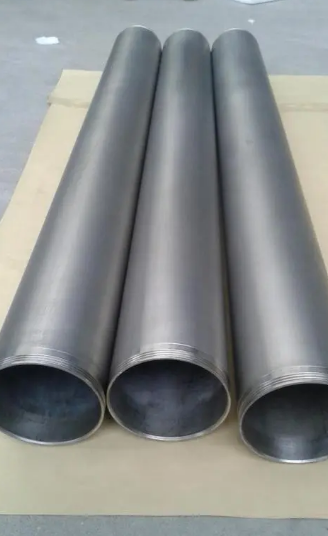Titanium alloy has low density, high specific strength, excellent corrosion resistance, low thermal conductivity, non-toxic no magnetic, weldable; widely used in aviation, aerospace, chemical, petroleum, electricity, medical, construction, sporting goods and other fields.
Common welding methods of titanium and titanium alloy include: argon arc welding, submerged arc welding, vacuum electron beam welding, etc.
Preparation for Titanium Tubing welding
The surface quality of welded parts and titanium wire has great influence on the mechanical properties of welded joints so it must be cleaned closely.
1) Mechanical cleaning of welding quality requirements are not high or difficult to pickling welding parts, can be used to wipe fine sandpaper or stainless steel wire brush, but it is best to use tough alloy yellow scraping titanium plate, remove oxide film.
2) Chemical cleaning: Before welding, the specimen and welding wire can be pickled, and the acid cleaning solution can be HF (5%) +HNO3 (35%) water melt. Rinse with fresh water after pickling, and weld immediately after drying. Or use acetone, ethanol, carbon tetrachloride, methanol, etc. to wipe the groove of the titanium plate and its two sides (within 50mm each), the surface of the welding wire, the part of the fixture in contact with the titanium plate.

3) Selection of welding equipment: DC argon arc welding power supply with external characteristics and high frequency arc initiation should be selected for argon arc welding of titanium and titanium alloy tungsten plate, and the delay time of gas transmission should be no less than 15 seconds to avoid oxidation and contamination of weldparts.
4) Selection of welding materials: argon purity shall be no less than 99.99%, dew point below -40℃, and the total mass fraction of impurities shall be 0.001%. When the pressure in the argon cylinder drops to 0.981MPa, it should be stopped to avoid affecting the quality of the welded joint.
5) Gas protection and welding temperature: When welding titanium pipe joint, in order to prevent the welding joint from being polluted by harmful gases and elements at elevated temperature, necessary welding protection and temperature control must be carried out on the welding area and weld, and special protective cover should be used for comprehensive protection, and its temperature should be below 250℃.
Essentials of operation
1. During manual argon arc welding, the angle between the welding wire and the weldment should be kept at a minimum (10~15°). The welding wire is smoothly and evenly fed into the molten pool along the front end of the molten pool, and the end of the welding wire shall not be moved out of the argon gas protection zone.
2. When welding, the welding torch does not do transverse swing. When it needs to swing, the frequency should be low and the swing amplitude should not be too large to prevent affecting the protection of argon gas.
3. When arc breaking and weld ending, argon gas should continue to protect the welding torch until the metal of weld and heat affected zone cools down to below 350℃.
Weld and heat affected zone surface color
1. Weld zone
Silver, light yellow (one, two, three weld allowed); deep yellow (second and third grade welds allowed); gold purple (three level weld allowed); dark blue (first, second and third grade welds are not allowed).
2. Heat affected zone
Silver, light yellow (one, two, three weld allowed); dark yellow, golden purple (two, three weld allowed); dark blue (tertiary welds allowed).